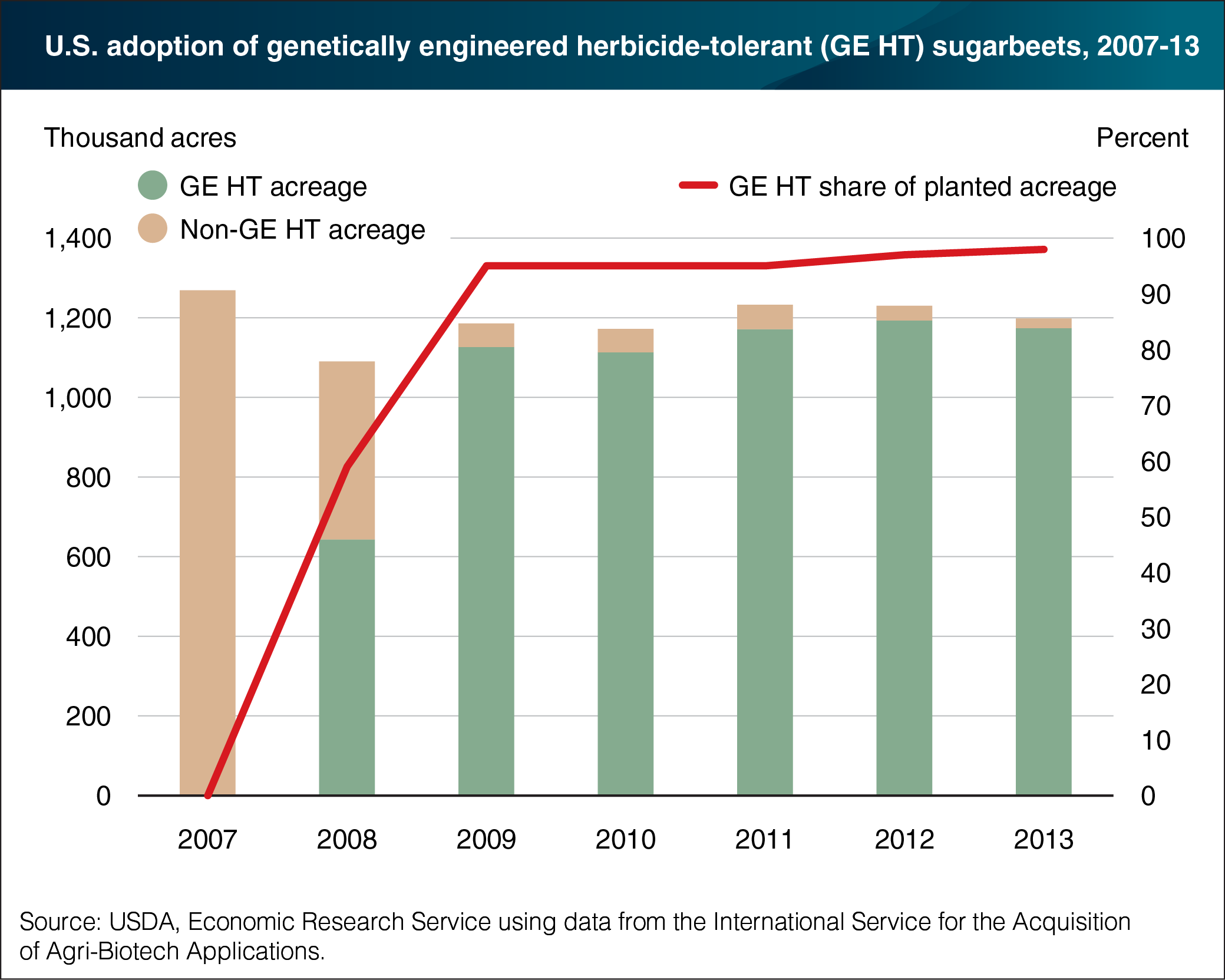Herbicide-tolerant sugarbeets accounted for 98 percent of sugarbeet acreage by 2013
- by Seth J. Wechsler and Daniel Milkove
- 6/1/2017

The United States produced about 8 million metric tons of sugar in 2013. Over half of that sugar came from sugarbeets. However, weed infestations can reduce yields, lower forage quality, and increase the severity of insect infestations. Compared to conventional sugarbeets, planting genetically engineered, herbicide-tolerant (GE HT) sugarbeets simplifies weed management. Specific herbicide (such as glysophate) applications kill weeds but then leave the GE HT sugarbeets growing. Studies suggest that farmers who plant GE HT sugarbeets can increase yields, while reducing the costs of weed management. Once introduced commercially in 2008, U.S. farmers adopted GE HT sugarbeets quickly. That year, farmers planted GE HT sugarbeets on about 60 percent of all sugarbeet acreage; by 2009, that number had grown to 95 percent. As of 2013, approximately 1.1 million acres of GE HT sugarbeets (98 percent of all sugarbeet acreage), with a production value of over $1.5 billion, were harvested in the United States. Minnesota, North Dakota, Idaho, and Michigan accounted for over 80 percent of sugarbeet production that year. This chart is based on the ERS report The Adoption of Genetically Engineered Alfalfa, Canola, and Sugarbeets in the United States, released November 2016.


